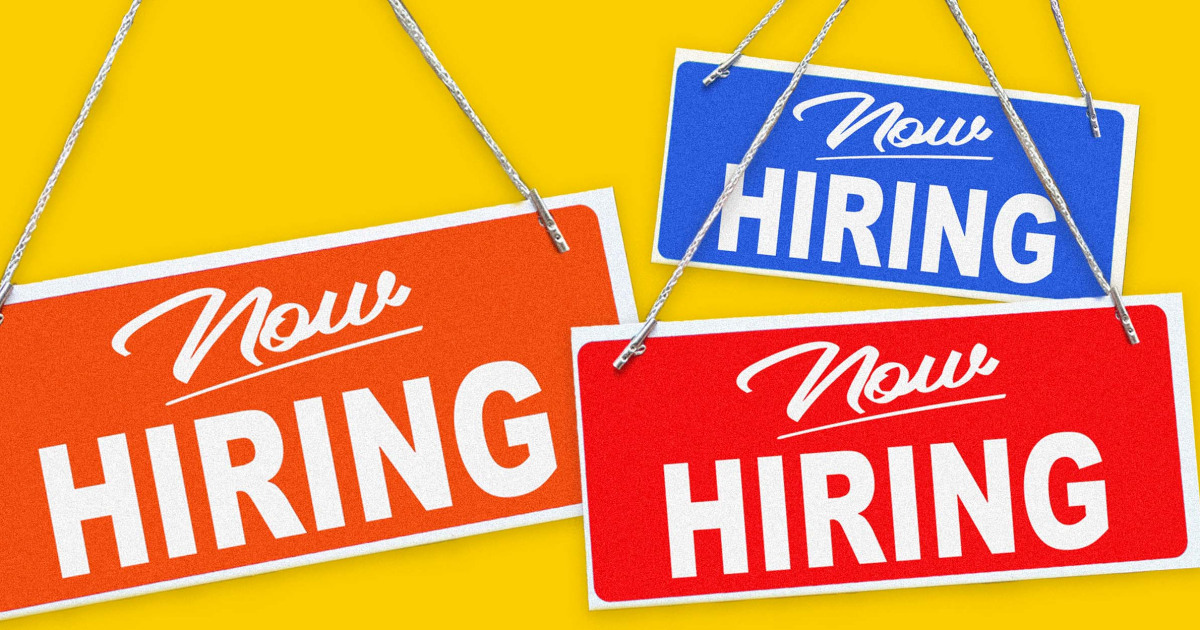
The Job Openings and Labor Turnover Summary for August, released Tuesday morning, found that the number of job openings took a breather from the record highs it has been notching in recent months, but a record 4.3 million workers walked off the job.
Job openings fell from a record of 10.9 million to 10.4 million — an unexpected drop experts say could be attributable to contractions in commercial activity due to the delta variant, falling economic expectations, companies taking a late-summer breather from hiring, statistical noise or some combination of the above.
“If we look across broad cross-sections of economic metrics, we know there’s been some moderation recently” in forecasters’ expectations, said Mark Hamrick, chief financial analyst at Bankrate. On Tuesday, the International Monetary Fund shaved a percentage point off its projection for U.S. GDP growth this year, paring its forecast from 7 percent to 6 percent.
“There continue to be a lot of remarkable cross currents in the economy,” Hamrick said. “It stands to reason that there would be a cost to that with respect to employment.”
But with more than 10 million unfilled job openings, it is clear that an increasing number of workers are seeking greener pastures. The rate of people quitting jobs notched a record high of 2.9 percent, leading with increases in people leaving hotel, dining and wholesale trade jobs.
“Given the fact that we have lower employment levels overall, it’s kind of incredible to see thousands of people quitting,” said Julia Pollak, chief economist at ZipRecruiter. She suggested that a continued desire to avoid jobs with high levels of in-person contact could be driving some of the migration. “It’s interesting to see how widespread these record quits are. What may be part of what’s going on here is people are leaving these on-site sectors for more remote-friendly sectors,” she said.
Job openings fell the most in health care and social assistance, and accommodation and food services industries — two sectors seismically impacted by the pandemic’s long duration.
Experts warn that the labor shortage is weighing on the ability of mom-and-pop businesses to thrive and even, in a growing number of cases, to survive. Small-business networking platform Alignable found that one-third of restaurant owners surveyed expressed doubt that they could make it through the holidays without going out of business. The inability to hire was cited as a key factor, said Alignable co-founder and CEO Eric Groves, and he warned that other kinds of businesses that are highly dependent on labor for revenue generation, such personal services and transportation, face a similar risk.
“Wherever labor is the critical element to revenue, it’s a challenge,” he said, pointing to anecdotal reports of mom-and-pop restaurants and stores shutting their doors entirely for a greater part of the week. “The problem is, when you’re short-staffed… you’ve got to give your staff a break so you can deliver the level of service you want.”
Groves said businesses of all stripes have had to raise pay — on top of paying higher costs for supplies, ingredients and other raw materials — but that many struggled to find workers at all.
A new survey from the National Federation of Independent Business found that a record-high 51 percent of small businesses report being unable to fill jobs. “It’s an incredibly difficult time for those who have open positions to find and attract applicants,” said Holly Wade, executive director for the NFIB Research Center.
“For many of them, they’re not receiving any applications — there are just no resumes coming in right now,” she said, even though a record 42 percent said they have increased pay and 30 percent said they are planning to do so in the next three months. Wade added that high turnover within the existing workforce exacerbates the challenge.
This is increasingly weighing on business owners’ outlook for the future: The NFIB survey found that small business optimism fell, and owner uncertainty rose. This is weighing on plans for growth such as capital investment, the survey found.
Despite the contraction in the number of job openings, Wade said the labor shortage remains a cloud hanging over economic recovery. “I don’t see that this issue eases anytime soon,” she said. “Small business owners are planning to have to deal with this well into 2022.”
Source: | This article originally belongs to Nbcnews.com









